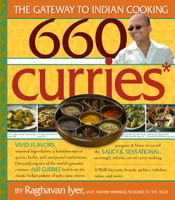Advertisement
Turmeric
Haldi
Published 2008
This deep yellow rhizome, a very close sibling to ginger, is probably native to India. It is mentioned in ancient Sanskrit literature and has yellowed its way into not only our foods, but also religion, medicine, and as a dye for fabrics, especially the robes worn by Hindu priests and Buddhist monks. Ground into paste form and wrapped in a bandage over a wound, it has anti-inflammatory properties. The chemical curcumin in turmeric (which gives commercial curry powders that yellow color) is the subject of recent medical research in the fight against Alzheimer’s disease and certain forms of breast and prostate cancer. Turmeric, sold most often in ground form in the United States, is harsh-tasting when raw, a reason why it is rarely used this way. Nevertheless, sprinkle it in oil (cushioned with other ingredients), and its astringent taste diminishes in the resulting sauce. Coat fish fillets with ground turmeric, and it removes fishy odors. Also known as poor man’s saffron (believe me, it is nowhere close to the flavors of saffron) or safran d’Inde, turmeric is a strong-tasting and -coloring spice that we use sparingly but frequently in many of our dishes.


